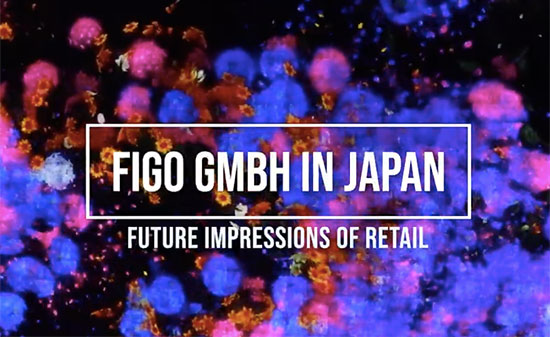
Customer Experience in Times of Digitalisation
15.11.2019 / Expert Articles
“It is not the strongest of the species that survives, nor the most intelligent; it is the one most adaptable to change.”
Charles Darwin
What does it mean to be part of Industry 4.0 today? How fast do we actually have to evolve in this day and age to be on the ravages of time and how can we become more digital without losing our traditions or physical objects that we hold so dear to our hearts?
Paper still has significance, but not everything has to be printed. In today’s world, we receive a flood of e-mails and messages every day and respond to them on various mobile and stationary devices. Fewer and fewer people carry a book with them, and that’s why letters and cards play a major role in special events and for important documents. Handmade articles are highly valued, but automated mass processing saves time, money, and energy. Important energy that we may soon be able to invest in other activities without losing sight of precious manual labour, used for custom-made items.
According to a study by EHI (IT Trends in Trade 2019 – Investments, Projects, and Technologies), only 32% of the surveyed companies have integrated artificial intelligence into their operations, 36% would like to establish artificial intelligence within the next three years, and the remaining companies are still far from the digital and technological era. The IT budget and qualified employees are the be-all and end-all for successful implementation and establishment in the company. This is realised through a successful omnichannel integration, electronic shelf labels and digital receipts, mobile phone payments, smart mirrors, customer analysis, and mobile phone services. A huge challenge for companies today. But a very promising one in the long term, as companies and brands can get to know their customers better than ever before. Real-time measurements monitoring the customer's development at various touchpoints enable agile marketing strategies and perfect adaptation.
How do we incorporate all this into our work at Figo?
When the Figo team is designing store concepts, going through the design process together with the customer, and preparing the execution through planning, the question of how the customer will feel when using the spaces arises again and again. How does the customer feel when they touch a certain material? How does the customer move around in the shop? How can the customer best ergonomically operate a screen or a test bar? How can we surprise the customer in a positive manner? It always raises the question of which elements should be controlled digitally and which should be controlled manually. What is more cost- and time efficient? And what is possible according to the latest developments in science and technology?
We, at Figo GmbH, are an international team made up of individuals who speak nine languages and originate from eleven different countries. In our last expert article by Ayse Ulupinar, we stressed the significance of international co-operation in order to draw attention to the importance of thinking outside the box and including other occurrences regarding different countries in terms of design, planning, and the implementation process to provide the best value and experience to the customer. For this very reason, we think outside the box and explore the global market again and again and encourage international teams at our headquarters in Bochum and on site in Berlin.
To recognise the individual needs and wishes of the customers, apart from the cultural differences, the individual needs are a huge factor in the customer-oriented design and construction. For this purpose, we get to know the customer, their needs, their environmental variables, and their wants. We accompany the customer throughout their entire customer journey and life cycle, and continuously develop new and appropriate experiences, which we individually review and adapt to topicality. Over the years, or as a result of a physical or psychological change, a customer’s needs may change, and the store, the product, and the service have to adapt thereto in order to keep the customer happy.
This is also made clear in the article by Angela Veccari-Kruse. Shop concepts have to plan for accessibility and incorporate the inclusion of every potential customer. This raises the question of what the customer needs at a particular point in their life and whether we already have this on offer or whether we still have to make this available. Can a wheelchair manoeuvre through the corridor? Is the Braille positioned well, does the audio function work properly? Are the signs and symbols that are used understandable? Is the environment relaxing and does it counteract overstimulation?
We asked ourselves the question of which markets we can still learn something from, and Figo thus pondered the important retail questions that move the industry. This time around, we thought about which metropolis we could take a closer look at to explore digitality, inclusion, and design. The decision came easy and we chose the 2020 Olympiad and Paralympics host and technological leader, Japan.
In a research trip to Japan, we took a closer look at the Japanese retail market, spoke to locals, and tested the latest tech trends in order to get to know the pioneer in technology and explore the adjustments made for the Paralympics.
Join us on a journey through letters and numbers as well as rich traditions and cultural beauty.
Another type of digital world – Japan
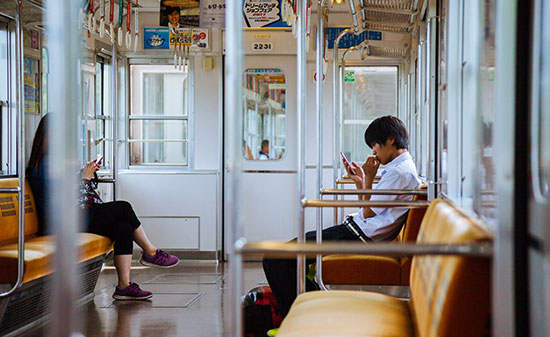
The robots “Nao” and “Pepper” already welcomed the Figo team at the airport. They were able to explain things and entertain us while other customers waited in long queues. We already noticed how handy the robots were based on the fact that very few Japanese people speak English fluently*. The robot or the information touchscreen can be of real assistance when there is a big rush of people or by bridging a period when a lot of Japanese personnel are being taught to be multilingual for their visitors and for international economic cooperation purposes.
There are many screens on the subways, at the stations, and in the airports with touchscreens or moving pictures, many even with sound. They send emotions, evoke desires, such as traveling through the Japanese nature or eating specific food, or clarify where to find something nearby. In Europe, in comparison, customers and interested brand and store managers often only find an appeal for the use of audio options, in retail and generally in the field of architecture, in specialised articles. Audio is often omitted in Germany; here, consideration is taken for the companies to directly transmit the sound to the mobile phones so that no other customers or employees are disturbed by the sound. Through headphones or the speakers, which one can also hold to one’s ear, information and directions can be transmitted in the store.
Audio aids are a tremendous asset and are still far too neglected. Just how effective an audio function can be is shown by demographic change alone, citizens who cannot yet speak the language of the country, tourists, and people with disabilities. It is also a tremendous asset for people who prefer listening to reading. It can also save a lot of time if one can listen to information about a specific product and simultaneously pack other products at another spot in the store.
Outstanding service and the ease of everyday life are directly accessible through technology in Japan, as Internet is offered in cafes, restaurants, shops, and subways free of charge. So, the indicated location of the advertisement can also be found directly via Google Maps and GPS.
When we were traveling through Japan or on the train, we hardly saw anyone who was not busy on their mobile phone. This means that every trip can be seen as advertising time and a “customer experience chance”. People of all ages are busy using their apps, in chat programs, on websites, and social media. A QR code is used on many advertisements, posters, and screens. By using this code, the interested person can directly access further information on products and services. A very simple way for potential customers to get information straight to their mobile phones when in the subway and in the shop. Of course, this is also available in Germany, but the QR code has not yet established itself there. Alone the hurdle of downloading an app to use a QR code inhibits many potential users in Germany. The Japanese, on the other hand, like to use this simple tool, making it easier to find information and thereby save themselves precious time.
But, have the Japanese always been more tech-savvy and architecturally advanced? The answer is actually no, since the tallest building, the Tokyo Tower, was completed in Japan in the 1930s only. This building is often cited as an example when it comes to the starting point of Japan's rapid development. The Japanese have managed not only to adapt to other metropolises in a short time span, but to overtake them with regard to buildings, technologies, cleanliness, high-quality designs - all without losing their identity. It seems that Japanese people all over the world are picking raisins and refining them with their own touch. Something, that we as Europeans, could become more open to.
Through the book "Holistic Retail Design – Reshaping Shopping for the Digital Era" by Philipp Teufel, we became aware of Isetan, a department store in Shinjuku, which was our first highlight on the expedition through Japan’s retail specialities.
‘Best Practice’ in the retail industry
„Create great Customer Experience, please.“
Carina Patrizia Gerards
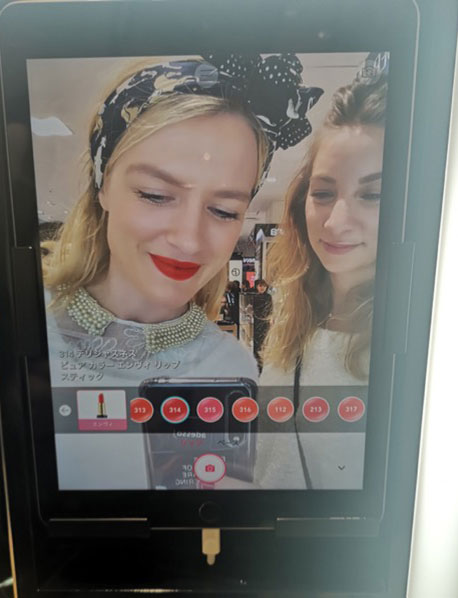
Get your hands dirty!
An important point that many authors have brought up in recent articles on the topic of Customer Experience is the call for actual experience, to try things out and make experiences in sales areas and showrooms. Something that the Japanese have mastered very well. For example, in the sales rooms of “Tokyu Hands – a creative life store”, trying is written with a capital “T”. Customers can really try out everything and give away their products, from vacuum cleaners to dryers, soaps, and leather goods. Customers can feel, smell, taste, spend a lot of time, gather inspiration, and even have certain products personalised. There are even visual and auditory explanations for a wide variety of products, without a salesperson having to assist. Thus, the call to all our customers and potential customers: “Create great Customer Experience, please.” A shop must become more of a playground, it must entice, it must allow people to spend time there, it must become a second home.
Become a child again
Japan offers a very special experience with its first digital art museum, the “teamLab”. This extraordinary place brings together digital elements, art, and our childlike “me-state”. With the motto “Wander, Explore, and Experience”, teamLab unites the fields of art, science, technology, design, and the natural world under the title of “movers and shakers” of “ultratechnologists”. The fields are created based on the knowledge of artists, programmers, engineers, CG animators (computer animations), mathematicians, and architects. According to teamLab, digital technologies have liberalised art from its physical restrictions. They see man and nature as one, something that is mutually dependent and that cannot be separated from one another.
In the picture, you can see men painting a picture and it being portrayed as a visualisation on the walls just a few seconds later. They are part of the room and influence the atmosphere of the room. Digital and physical elements are dependent on each another and have a strong impact on one another. It is interesting to see what the experience does to the participants. The Figo team saw many smiling and relaxed faces, doing something they probably hadn’t done for a very long time. The experiences created by the teamLab can trigger new processes and allow the user to channel new ideas or release their inner child.
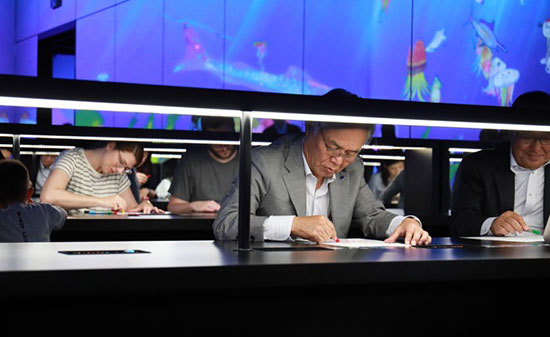
Robots and artificial intelligence
One thing is for sure: the Japanese are very far advanced in the development of artificial intelligence and in the research of humanoid robots, compared to other countries. They stand out from the crowd by not being shy to allow prototypes into the population. This means that a friendly humanoid female robot may show you the way in a department store, where a toilet can be found, or where something delicious can be eaten.
The fusion of tradition and the modern age
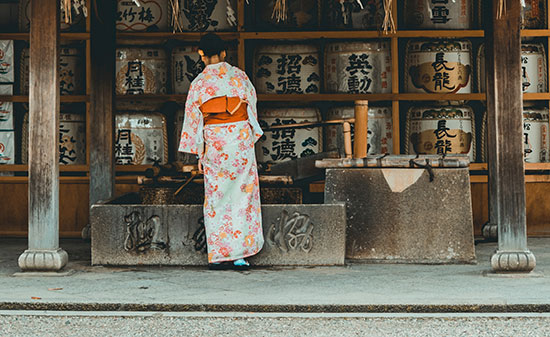 It’s an art to fuse the new technologies with longstanding traditions, that the new use increases effectiveness, but the values of a society are not lost. Rapid, technological development requires adjustment processes and rules. The Japanese thoroughly succeed in creating a symbiotic relationship and integrating new possibilities with an effortlessness that is remarkable. For example, you would find old towns with traditional flags and symbols as well as digital screens, which don’t look out of place at all. They are simply integrated into the clean cityscape and create an atmosphere of modernity – without losing their roots. Natural elements are interwoven with electronic elements, thereby creating an environment that is both relaxed and beneficial.
It’s an art to fuse the new technologies with longstanding traditions, that the new use increases effectiveness, but the values of a society are not lost. Rapid, technological development requires adjustment processes and rules. The Japanese thoroughly succeed in creating a symbiotic relationship and integrating new possibilities with an effortlessness that is remarkable. For example, you would find old towns with traditional flags and symbols as well as digital screens, which don’t look out of place at all. They are simply integrated into the clean cityscape and create an atmosphere of modernity – without losing their roots. Natural elements are interwoven with electronic elements, thereby creating an environment that is both relaxed and beneficial.
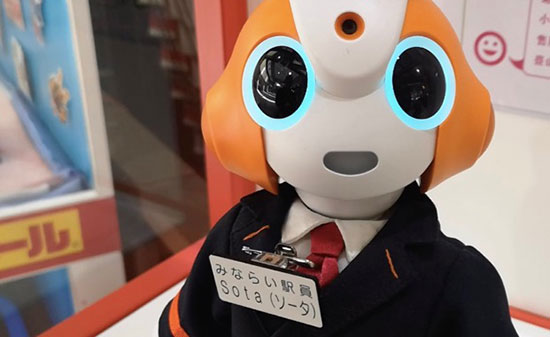
“This authenticity of tradition and technological use was what impressed me the most. The lines between technical objects and nature become blurred here.”
Carina Patrizia Gerards
It’s quite a normal occurrence in Japan to make your walk through a garden even more interesting with GPS. The user thereby gets information on certain plants or sights sent to their mobile phone. Why not also implement this in a department store? A department store can ooze tranquillity and cosiness through the use of water elements, sound and fragrance, fresh plants, benches and armchairs can invite customers to relax and linger, and technologies can identify new pathways and provide information. The department store thereby becomes a second home. A place where the user can spend time alone, but also with friends and family, hold business meetings, or work. Another pivotal point is that the created places are not only useful, but also look good. It’s about a very important factor: the Instagramable appearance. It must be worth photographing!
An Instagramable appearance, an “Instagramable Moment”
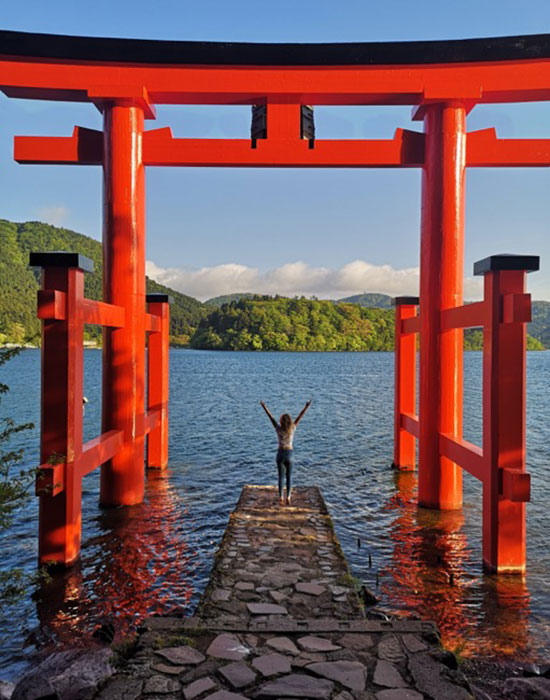
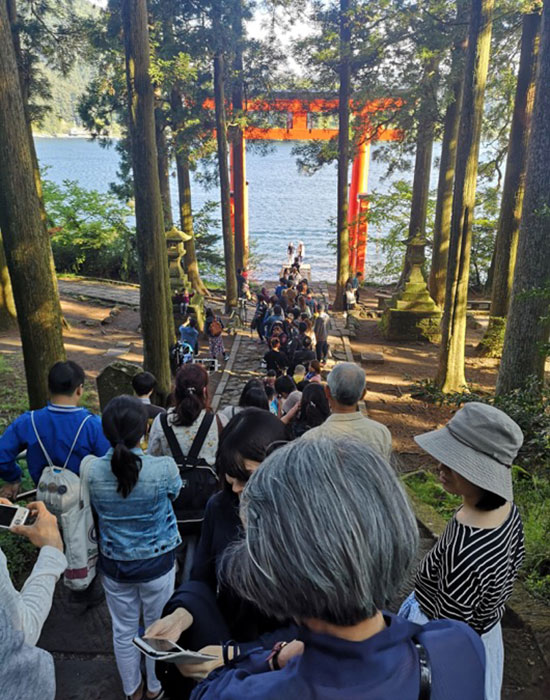 One point that Japan is already prepared for is creating an “Instagramable Moment”. This means that there are places where an Instagram-worthy look has been created. Whether at a Lobstar2GoBude, a luxury department store, or a traditional location, the Japanese understand how important it is to offer the right photo hotspots. And no expense and effort are spared.
One point that Japan is already prepared for is creating an “Instagramable Moment”. This means that there are places where an Instagram-worthy look has been created. Whether at a Lobstar2GoBude, a luxury department store, or a traditional location, the Japanese understand how important it is to offer the right photo hotspots. And no expense and effort are spared.
Many consumers don’t just buy from or visit a shop because they need something. It is part of their need to express their own identity. With reference to a brand, they want to send a message about what they are and what interests them, and which consumer circle they belong to.
This can be a bar in a department store, a flowered wall in a shop, or professional lighting for a brand to get free advertising from fans by them sharing their visits online. Brands and companies who do without these features, not only lose out on potential online content, but can also disappoint their customers. Because the expectations of demanding customers are high, due to the fight for attention between the most diverse companies and brands and their various touchpoints. A point that we have wanted to establish for our customers for a long time now: place the attention on their brand and their company. For example, we just recently integrated a climbing wall into one of the premises for the company Internetstores in order to make their relation to outdoor sports directly tangible. Similarly, we created a showroom for our customer Getslash, which resembles a luxurious cruise cabin and now expresses a wide range of holiday moods in the Speicherstadt of Hamburg and can be auditorily and visually adapted based on the customer requirements; customers can experience a champagne bar and enjoy the space with a refreshment, and various effects that stimulate all the customer’s senses. A highlight in the cabin is a hammock and a small wooden jetty. These elements invite people to enjoy an “Instagramable Moment”. These are places and elements that you want to capture, they invite customers to linger and want to share with others.
Many customers are attracted to a brand or location because it has a special feature that has made it known as a “photo spot”. Certain hashtags # and search criteria on the Internet and social media make it possible to be found. Many places are hyped up because of that. People often flock to a place for that one photo. This is an opportunity for retailers, as many of the costs and efforts are taken up if the location offers added value. Thus, in certain cases, the choice of location and thereby the real estate costs can be controlled. This is another aspect of our Figo GmbH portfolio, as we can assist you in finding the right property in the right place. Every product and service has its own unique criteria that make a place an experience. And, sometimes, customers also like to drive long distances to take a closer look at your world of experiences. So, not only the expensive and well-frequented roads are important when it comes to a new location.
To ensure an increased Customer Experience in your shop or department store and to include new technologies and digital elements, we have prepared the following checklist for you.
Checklist for your store:
Involving the mobile phone in the store
- Mobile phone charging docks
- Free Internet
- Easy access to information through browser/website and/or app
- Smartphone integration in store
- Audio features
- GPS
- Personalised ads
- Omnichannel utilisation (take shopping cart and wish list)
- Check availably of products
- Tutorials and application examples
- Price comparisons
- NFC Technology & RFID Technology
- Payment by smartphone
- Tap & Learn
- Charging docks
Moving-image advertising
- Screens with videos
- Translucent displays
- Projections of objects
- Smart changing rooms
- Smart mirrors
- Interactive walls
Inclusion of all senses
- Fragrance integration
- Set focus through colour strategies, design of furniture and paths
- Audio features (via mobile phone, audio guide, speakers at the counter)
- Material selection of the surfaces based on the concept
- Fresh plants, water features, natural materials
- Create background noise concepts and places to relax
- Lighting concepts
- Café or bar integration
- Tester bar
- Experience bar
- Lounge and seating facilities
Criteria to successfully implement a new technology:
[Displays, personalisation spots, apps etc.]
1. High customer value
2. Easy operation
3. Accessibility
4. Speed of user interface
Long story short: A key word in the designer life in Japan is “simplicity”. It is clear that their success is due to the fact that the digital tools fuse with the environment, they are easy to use, and lead to the desired outcome. If the customer’s needs have even been surpassed, resulting in an individual sense of well-being, this often attracts advertising through word of mouth, with statements like “you have to have tried/experienced this” and posted Instagramable Moments. The goal is for the customer to use the digital store elements for themselves, to satisfy a need, to have a good time or to gain information, and to use their own digital tools to share a positive customer experience with the world, like through videos, photos, and reviews on social media. For this to be effective, access must be ensured, as well as the quality of use and tools like charging stations and free Internet.
*
https://japan-wa.de/englischkenntnisse-der-japaner/
https://www.japandigest.de/alltag/verhalten/englisch-in-japan/
https://sumikai.com/nachrichten-aus-japan/englischkenntnisse-von-japanern-enttaeuschende-ergebnisse-im-nationalen-englischtest-176242/

About the author:
Carina Patrizia Gerards
M.Sc. International Marketing Management with Consumer Psychology
Carina, born in 1987, is the Marketing Manager at Figo GmbH. She accomplished her studies in Germany and Scotland and already worked in eight different countries, which significantly shaped her working method and the understanding of costumers of different markets. Her actual roots lay in the cosmetics industry, but her love of arts and interior design brought her to Figo and gave her the chance to combine her passion: retail industry, interior and sustainability.


